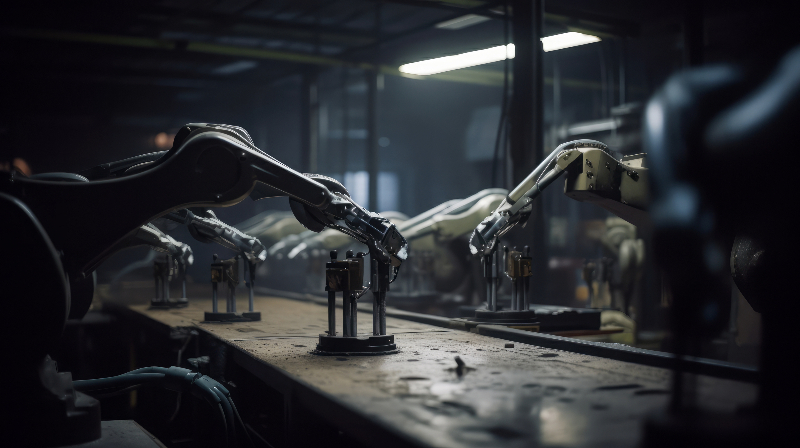“[B]ut test them all; hold on to what is good” (1 Thessalonians 5:21).
We are living in a new industrial revolution, dominated by several trends such as artificial intelligence, biotechnologies, and robotics, all within a digital financial system where cash is increasingly replaced by digital transactions. And like all industrial revolutions, this fifth one, called Industry 5.0, will lead to paradigm shifts and the development of new ways of living and working. The question is, what are the benefits and what are the challenges of the new technologies?
The ChatGPT phenomenon
With the advent of the ChatGPT conversational agent, developed by the company OpenAI, the discussion about artificial intelligence (AI) has gained much more media attention. The phenomenon created by ChatGPT is easier to understand when you consider that it reached one million users in just five days. By comparison, Facebook took ten months to reach one million users and Twitter took two years. In January, ChatGPT reached 100 million active users, making it the fastest growing platform in terms of users.

For those who haven’t used a conversational agent before, ChatGPT is a natural language processing tool powered by AI technology that communicates with users via text messages. It can understand and generate text in a variety of areas such as science, technology, general culture, entertainment, business, health, and lifestyle. As a natural language model, ChatGPT can perform a variety of tasks, including answering questions, completing sentences, translating text, making text suggestions and more. It can also learn from users, so the more you talk to ChatGPT, the more accurate and relevant its responses become. ChatGPT has been trained using a huge amount of text data, about 10,000 times more information than is contained in the Encyclopedia Britannica.
As well as the usefulness of such an AI model, there are downsides. Universities in Australia, for example, have decided to revert to paper-based exams after several students were caught using AI-based apps to write their essays.
Of course, AI is about much more than these conversational agents and is already present in applications ranging from photo-editing apps to banking apps and even disease-detection apps used in the medical field.
The challenges of artificial intelligence
If we were to list some of the challenges facing AI, we would have to include data security and privacy, algorithmic bias, and methods to regulate and provide transparency in the operation of AI algorithms.
Data security and privacy are major concerns when it comes to AI. As algorithms become more advanced, they collect, analyse, and store vast amounts of data. Companies that store and process this data need to ensure both security, so that the data does not reach unauthorised parties, and privacy, so that they cannot identify individuals based on the data they store about them.
Another important challenge for AI systems is the potential for unintentional system bias. AI algorithms are designed to reflect the data they are trained on, and can perpetuate existing biases in what they receive as input. This can lead to the system making unfair decisions and discriminating. To combat this, organisations developing AI algorithms must ensure that their systems are rigorously tested and monitored to identify any potential biases. They must also take steps to ensure that their data sets are as diverse and non-discriminatory as possible. However, it should be remembered that training AI models on very large volumes of data requires money, and only a few companies may be able to do this.
In conclusion, just as when we go to a supermarket, we are convinced that the products there have been through a series of regulations that have allowed them to be marketed, there needs to be a series of regulations to ensure that the data on which AI models have been trained have been vetted so as not to introduce bias. As such, there are calls for transparency throughout the AI design and development process. At the same time, several international bodies, such as the OECD, UNESCO and the EU, are trying to develop principles on which these AI applications can be built.
Principles that should underpin the design, development, and application of AI systems include equality, privacy, accountability, transparency and oversight, security, data quality, and sustainability.
Fear of job loss is one of the most common fears associated with AI. While it is true that AI has the potential to replace humans in certain positions, it is important to remember that AI cannot completely replace humans. AI is not a replacement for human intelligence, but a complement to it. AI can help automate certain tasks, but everything from analysis, synthesis or creativity to the taste of a good meal will continue to depend on humans. As with any industrial revolution, jobs will change, and the most important quality people will need to cultivate is adaptability and continuous lifelong learning. AI is expected to create 97 million new jobs by 2025, while displacing 85 million existing ones.

Another related fear is that of losing jobs to robots. There is much debate about the impact of robots on jobs. Some argue that robots are responsible for job losses, while others argue that they actually create new jobs. In reality, the impact of robots on jobs depends on the industrial context. In the manufacturing sector, for example, robots are increasingly replacing human workers, which will lead to job losses. However, many of these jobs will be replaced by new, higher-skilled jobs such as programming, engineering, and maintenance. For example, while jobs such as supermarket cashier will be taken over by the robot cashiers we already see in supermarkets, new jobs may be created, such as those needed to maintain the robot cashiers or those needed to troubleshoot the robots.
As I said earlier, an open mind and a willingness to learn new things throughout life can turn the disadvantages of the industrial revolution into long-term advantages. One such example is the opportunity to create higher-paying jobs for people while robots take over some of the repetitive and lower-paying tasks. Increasing the take-up of new types of jobs will require a combined effort from governments, through the development of digital literacy and new technology literacy programmes, from companies promoting new technologies, but above all from the people affected by this revolution, who will need to proactively start a process of retraining.
In order to use robots in industry and benefit from their contribution—automating repetitive tasks or better monitoring an industrial process—it is important to educate workers about the potential risks associated with robots and how to use them. It is equally important to ensure that robots are properly programmed and supervised by humans. It is also essential to ensure that robots are used to complement human work, not to replace it. Finally, for the technology to be adopted on a large scale, it needs to be understood and promoted through school education, but also through retraining and refresher courses that employers should offer to workers who may otherwise lose their jobs to automation. When assessing this direction of industrial development, it is important to realise that robots are already part of our daily lives (for example, robot vacuum cleaners that can reduce our cleaning time at home, or intelligent kitchen robots that can prepare food without human help).
There are several key issues that will influence the development of robots:
- AI and machine learning are rapidly developing areas that will allow robots to adapt to new situations and learn from experience; these robots can be used in areas that are difficult for humans to reach.
- In the service sector, robots will increasingly be used for various tasks such as cleaning or delivering packages.
- In healthcare, robots could be used for various applications, such as robotic surgery or diagnosis and treatment of diseases.
- Autonomous robots will increasingly be used in the transport sector, because they are able to drive cars or other vehicles without human intervention.
Digitisation of money
Another important trend today is the trend towards fewer cash transactions, or what we call cashless society. Cash is already being used much less, thanks to payment methods such as debit cards, credit cards, and digital wallets. Of course, a cashless society has its advantages, but it also has its challenges. Some of the benefits include:
- No need to physically handle cash and visit ATMs or bank branches.
- Electronic payments are faster than cash payments because there is no need to manually check and count money.
- Reduced tax evasion: In a cashless society, it is harder for people to avoid paying taxes because all transactions are recorded digitally.
But with these benefits come a number of challenges:
- In a cashless society, people who don’t have access to technology or don’t want to have a bank account may be excluded from the electronic payment system. This could lead to a divided and unequal society.
- Failure of payment methods (e.g. cards) can lead to widespread panic as cardholders are unable to cover their purchases or payments.
- Electronic transactions leave digital footprints that can be collected and analysed by government or commercial organisations.

Fraudsters can use various techniques to steal information and funds through electronic payments, including phishing, scams, and other tactics. In a cashless society, the risk of falling victim to such fraud can be higher, especially without digital education about the types of cybercrime. In other words, there is a need for a balanced attitude towards the exclusive use of electronic payment methods, and the needs and concerns of all people should be taken into account, as well as the level of digital literacy and the equitable provision of this type of education to all citizens.
What technology produces is not by definition good or bad. Technological revolutions have both benefits and challenges, but the most important thing is to keep our analytical mindset.
It is important that we continue to educate ourselves throughout our lives, that we stay informed, and that we try to constantly explore the new opportunities and challenges that technology presents to us.
Let’s end with a thought-provoking challenge: when you read this article, did you have reactions and opinions for or against the information and perspective presented by the author—who is a person like you? How would your perception of the information and perspective presented change if the article had been written by an artificial intelligence algorithm to which the author had provided the topic and keywords?
Răzvan Crăciunescu believes that any revolution that changes the way the world is perceived brings with it fear. In the face of this, we can respond by educating ourselves about the new reality.


















